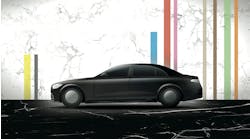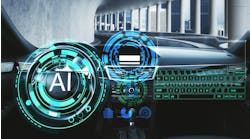The Walmart Effect is often used to describe the squeeze placed on local, independent businesses when a large chain or big box store moves into town.
In the auto insurance and collision repair industries, the phrase could soon take on a whole new meaning.
With an under-the-radar announcement in late April, Walmart threw its bargain-priced, corporate hat into the auto insurance ring. The launch of autoinsurance.com—a Walmart-backed, auto insurance price comparison shopping website—has the potential to completely alter the U.S. auto insurance landscape, in turn directly impacting the collision repair industry.
At least, that is the consensus among the collision professionals FenderBender polled.
“The fact is this is something that has already had an extreme effect [in the U.K.],” says California-based shop owner, Kye Yeung, who was part of a Society of Collision Repair Specialists (SCRS) group that performed an information-gathering trip to the U.K. in 2013. “There are a lot of differences here, but, like any trend, it has the potential to spill over. It’s something that could have a very large impact.”
The Concept
Price comparison sites (PCSs) are common in many U.S. industries; for instance, they’re extremely popular among consumers purchasing airline trips, tickets to entertainment events, and other price-based commodities.
According to Volusion Marketing Services, there was a 56 percent increase in use of PCSs in 2012, and 65 percent of all online shoppers spend at least 15 minutes comparing products on shopping engines.
However, this is not a trend that has caught on in auto insurance. Sites in the past have simply served as portals linking consumers to the sales departments of insurance carriers.
The Walmart product looks to change that.
More than $1 trillion was spent online in each of the last two years, and price comparison sites have played a huge role.
Consumers simply log on to the site, enter information (or have it auto-fill through their existing policy), and within minutes are provided with quotes and policies available for direct purchase through the site.
Consumers can also access the site directly through Walmart.com.
The goal, according to autoinsurnace.com founder Joshua Kazam, is to make “auto insurance simpler and faster for everyone.”
“We believe strongly in the power of comparing,” Kazam said at the time of the announcement. “It’s how you know you got a great deal on auto insurance.”
And unlike other fledgling PCSs, such as still-in-beta comparenow.com or smartinsure.org—the Walmart product has power players involved: Progressive, Travelers, and esurance, among others, are all part of the site’s initial launch.
The Impact
Auto insurance, like collision repair services, should never be commoditized, says SCRS executive director Aaron Schulenburg. Once policies are presented, shopped and sold based solely on price, value is inevitably going to be affected.
“I think that for a variety of things that consumers are intimately familiar with, price shopping makes sense,” Schulenburg says. “With auto insurance or collision repair, you’re not making apples-to-apples comparisons. Not every carrier is the same, the needs of customers aren’t the same, and consumers aren’t aware enough of what policy coverages are and what they mean at the time of a loss to use as a good gauge against price.”
In the U.K., PCSs are already extremely prevalent and have had major impacts on the industry. FenderBender columnist Jon Parker, managing director of the U.K.-based Byteback Group, recently wrote of the shift (“Rise of the Price Comparison Site,” April 2014), and spoke of the change in consumer loyalty; customers began switching companies regularly, making customer retention through direct repair agreements nearly impossible.
It also, as Yeung saw, squeezed value out of insurance policies, limiting the coverage consumers were awarded and hindering shops’ abilities to get compensated and turn a profit.
“One of the scary things we saw were shops working on a 1 percent net [profit]; good shops, too,” Yeung says. “The competition became so fierce, everyone was giving free loaner vehicles at their own cost, and they would pick up and deliver vehicles within a 50-mile radius.”
It became a market-share race for insurers; those that could obtain it set the rules.
The Collision Industry Adjustment
It’s impossible to foresee the future chain reaction autoinsurance.com will cause in the U.S., as there are many substantial differences between here and the U.K., Schulenburg says. Scale of the industry, ranging demographics of consumers, and the sheer size of some insurance carriers here could help minimize the impact.
The trend is only starting, though, as there are sure to be more following in Walmart’s footsteps. And the U.S. collision industry should be prepared.
“One of the things shops can do is better educate their customers on understanding the differences in policies and that a cheaper policy may mean cheaper premiums but it may mean less services or coverage at the time of a loss,” Schulenburg says. “At the end of the day, when we have a customer signing an authorization to repair, we have to remind them that they’re the ones in the driver’s seat, and the vehicle needs to be repaired to their expectations, not based on the lowest price.”



